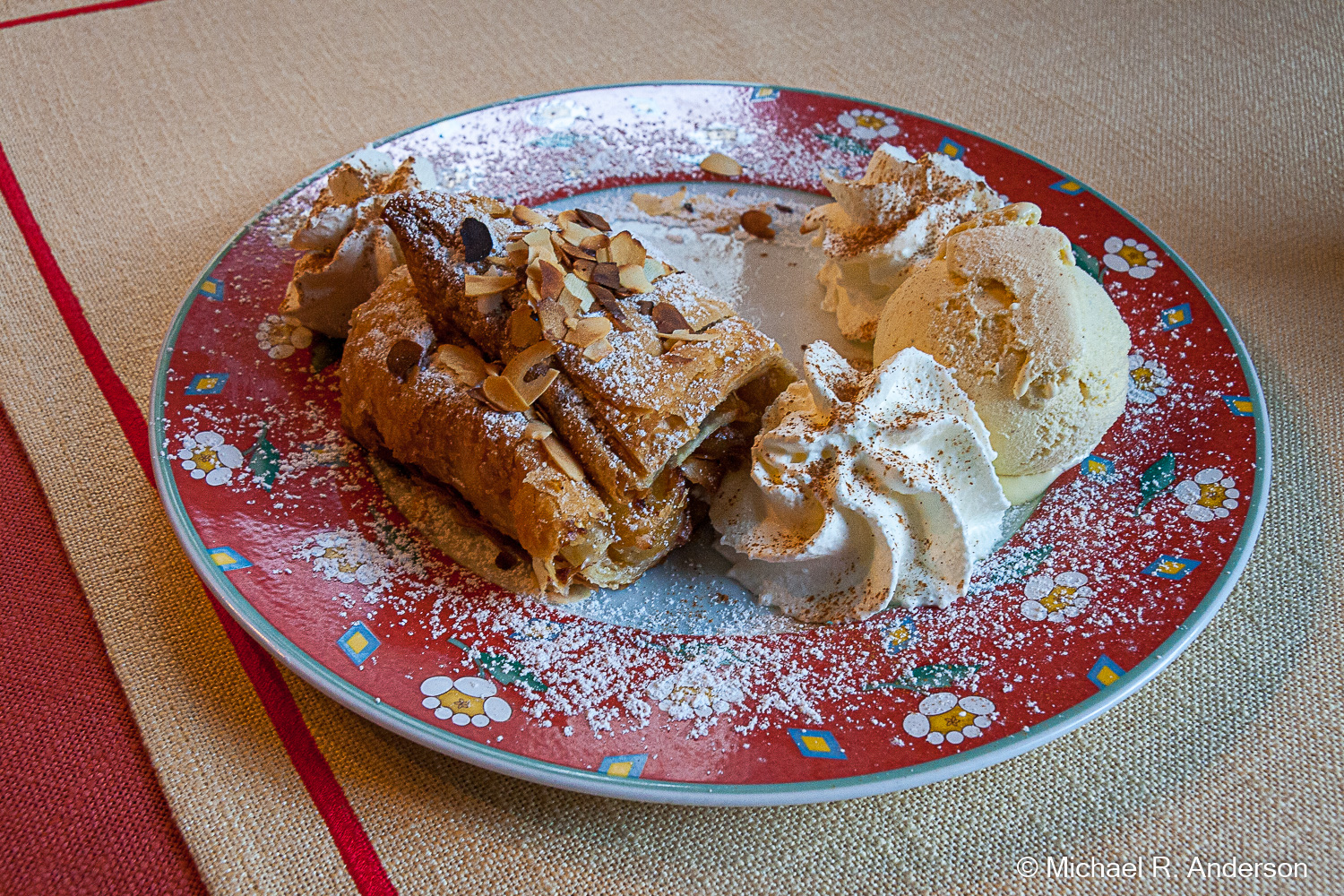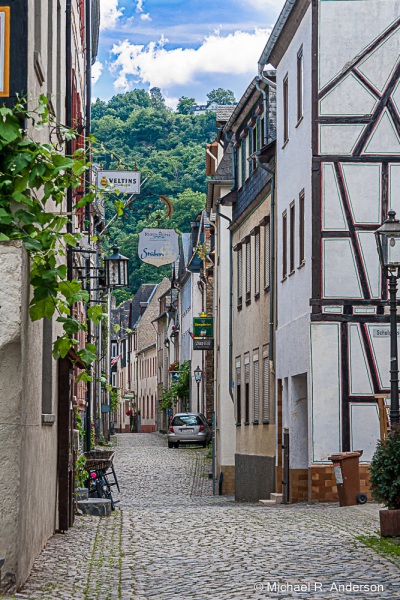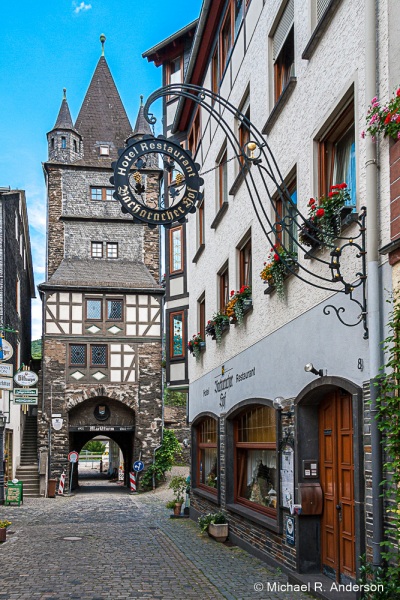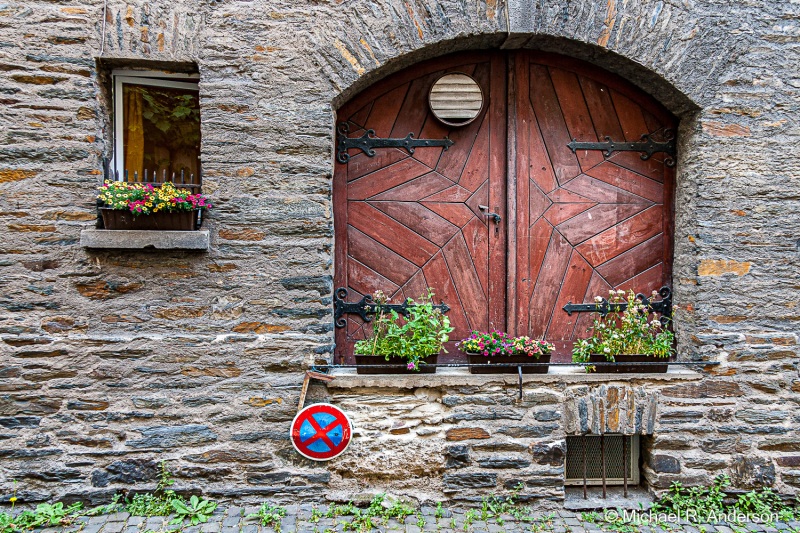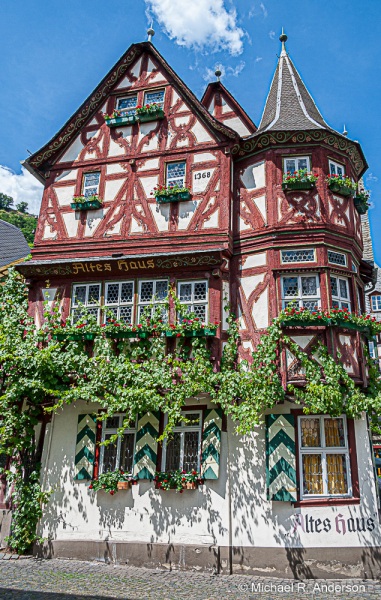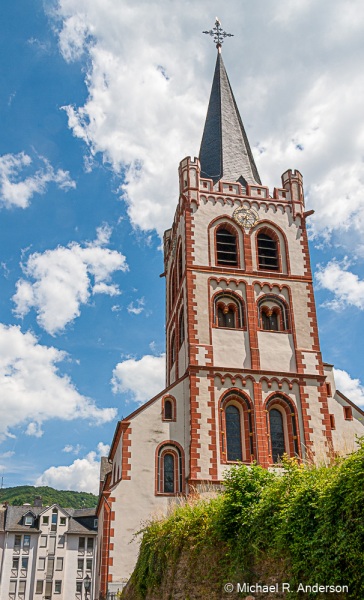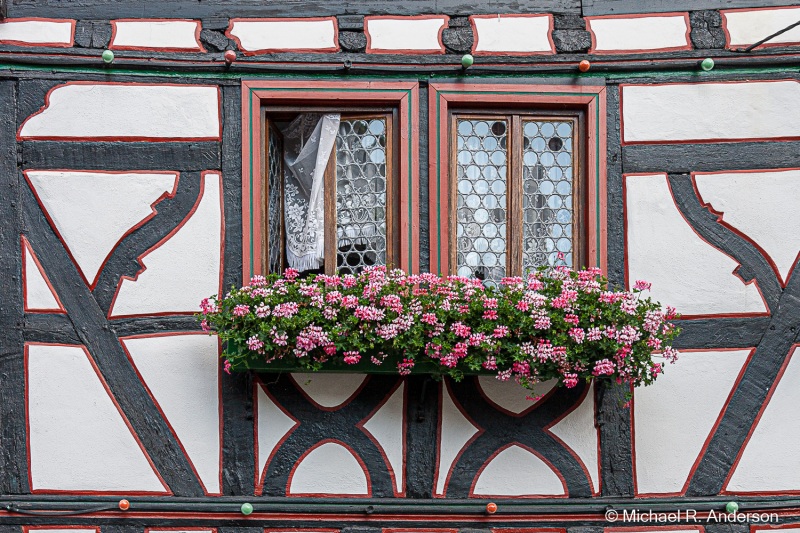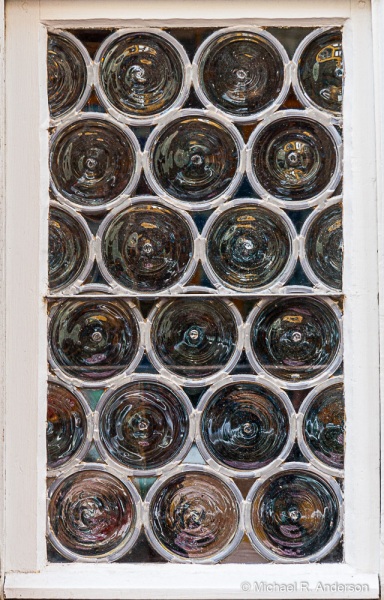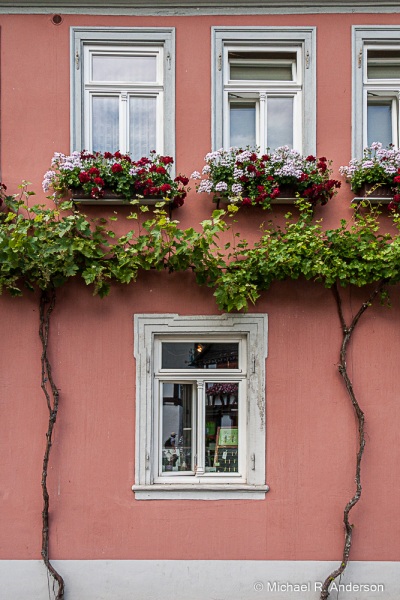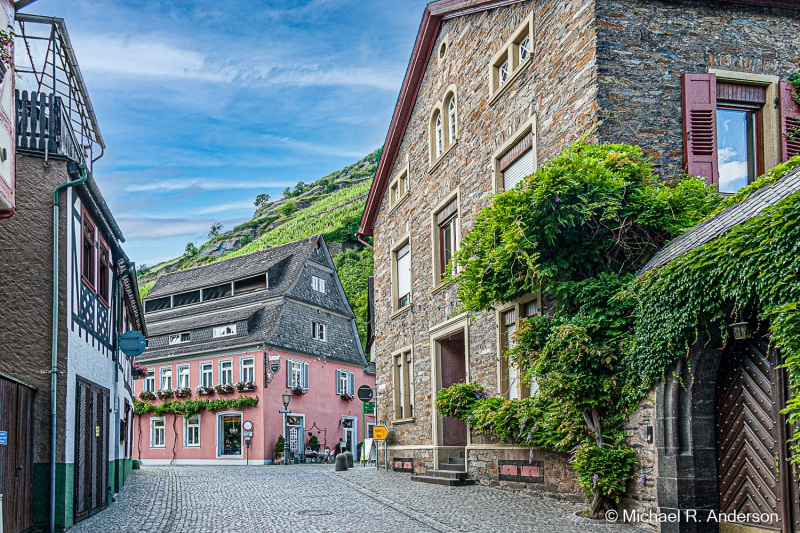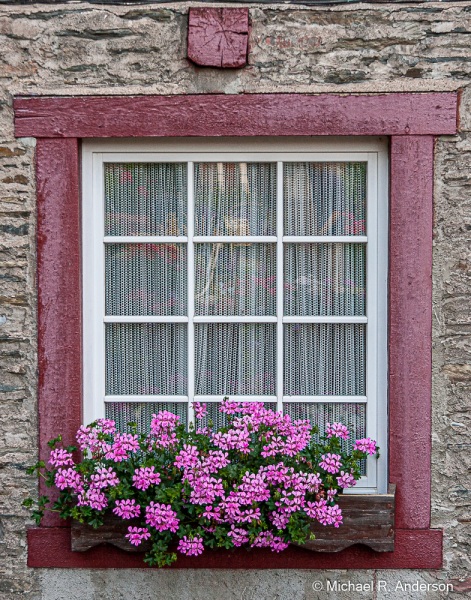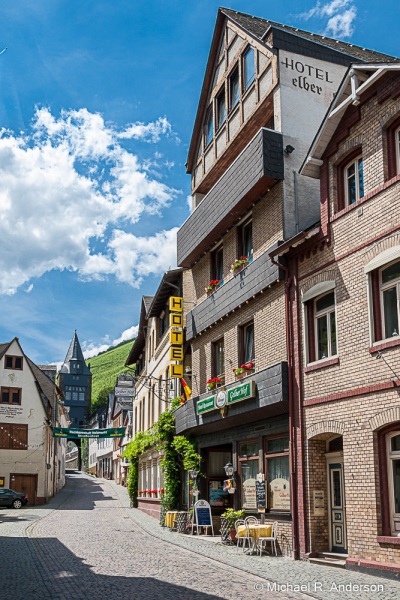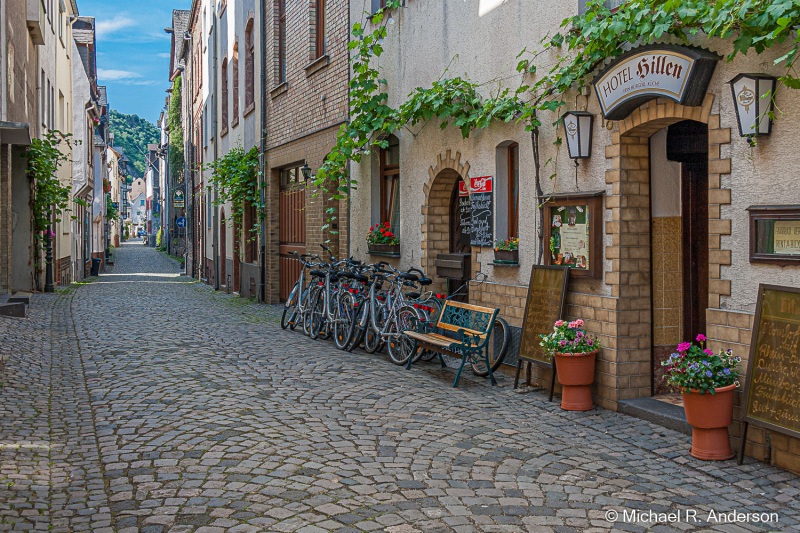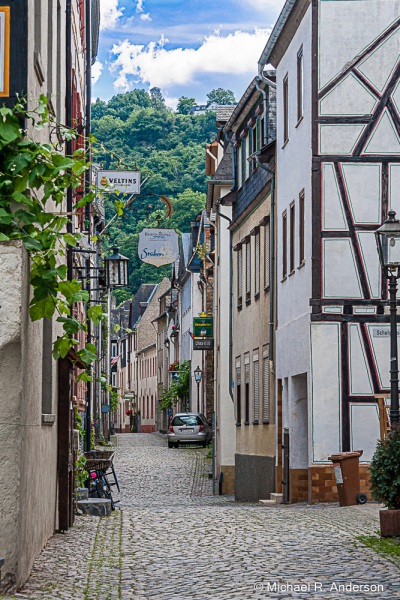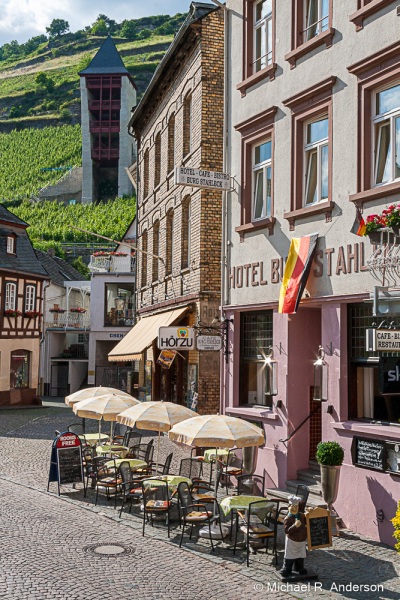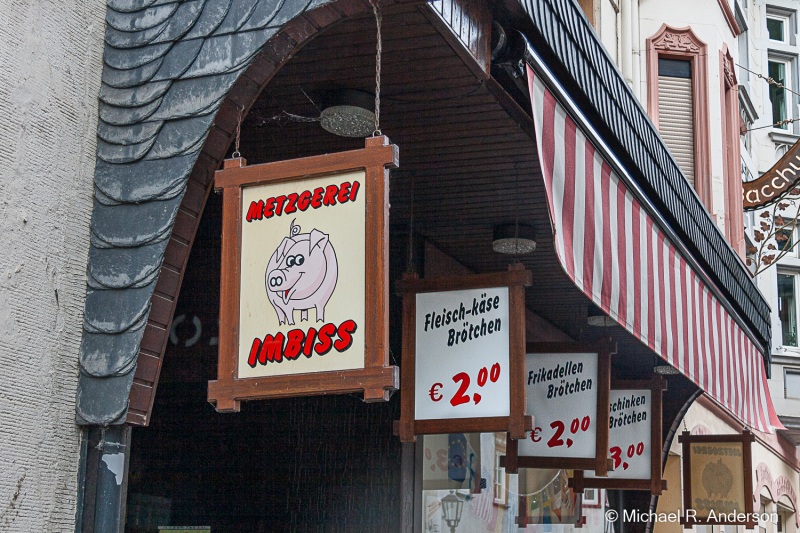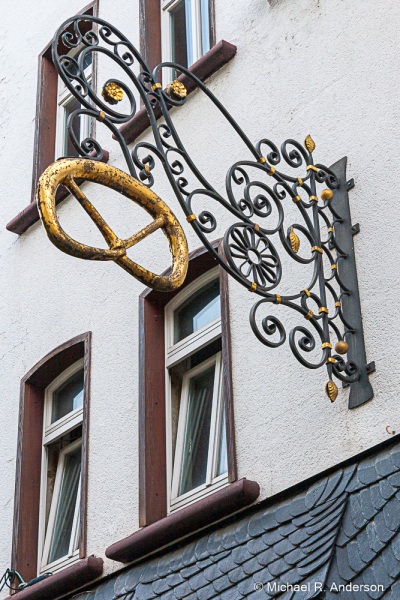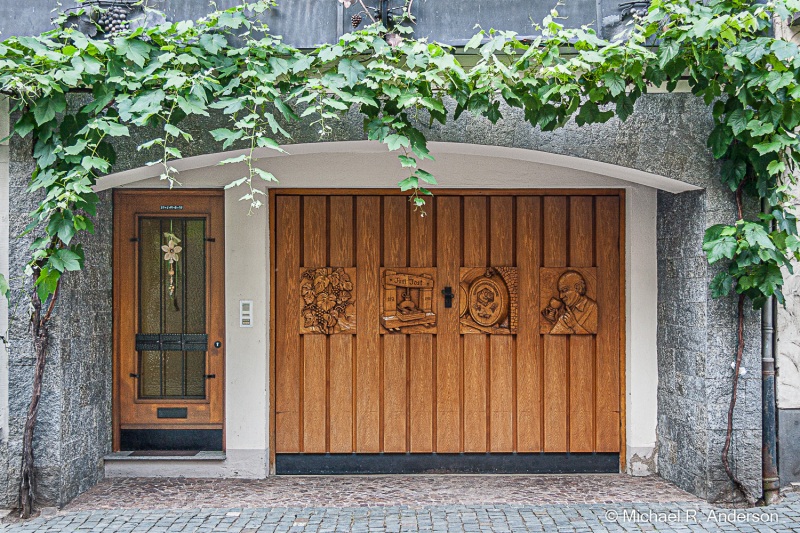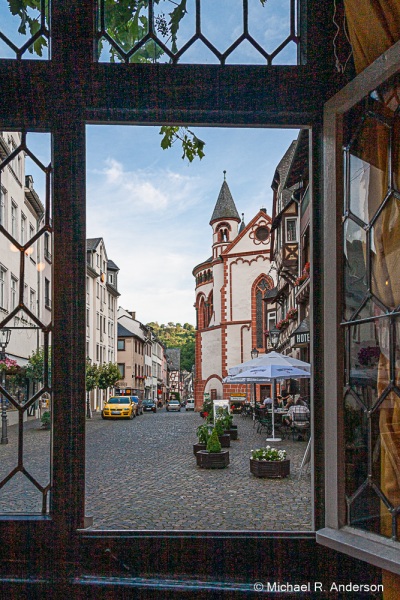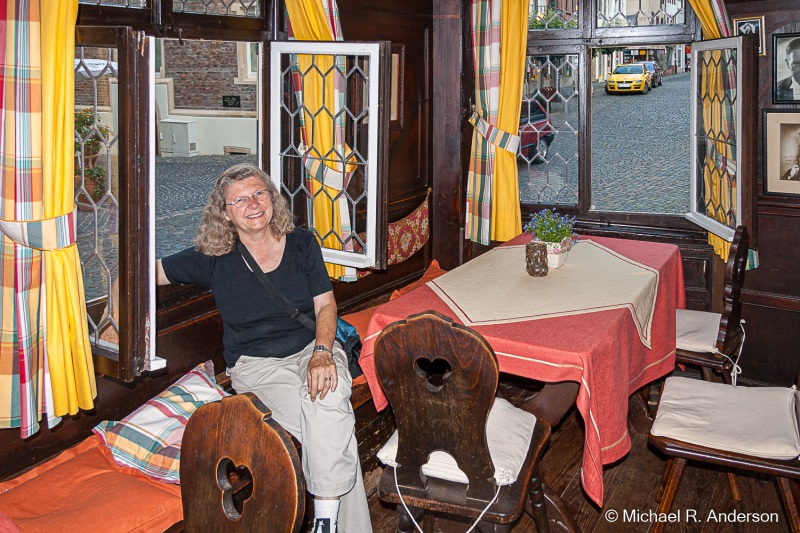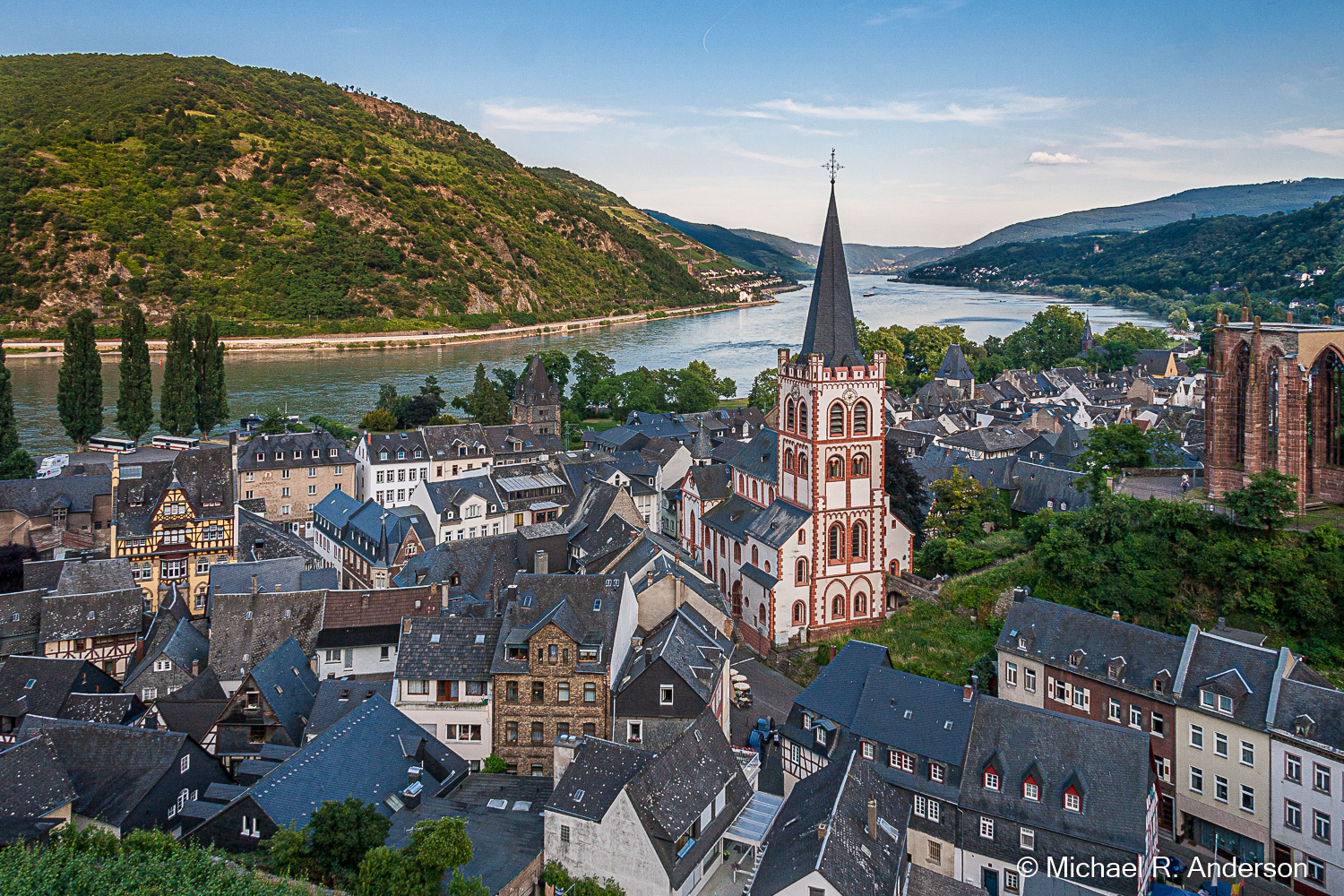
Back on the train, we continued our journey south. In Koblenz we transferred to another train, which eventually took us to Bacharach, a town of about 2,000. I wasn’t quite sure where our hotel was located, so we stopped an elderly woman, showed her the name and address we were seeking, and asked for directions. She was happy to oblige and gave us instructions … in German.
I had three years of German in high school, went to summer school in Germany for classes in German Language and Literature, and finished two additional semesters of German in college. I would not have called myself fluent at that time, but I could make my way through regular daily conversations with very little trouble. After more than 40 years, however, my German was, shall we say, a little rusty.
While conversing with the friendly Frau, I was happy to discover that, even though I could no longer speak German very well, I still had a modest understanding when I heard it. So, we took the next left, followed it until we reached a bank, and spotted our destination from there, the Pension im Malerwinkel.
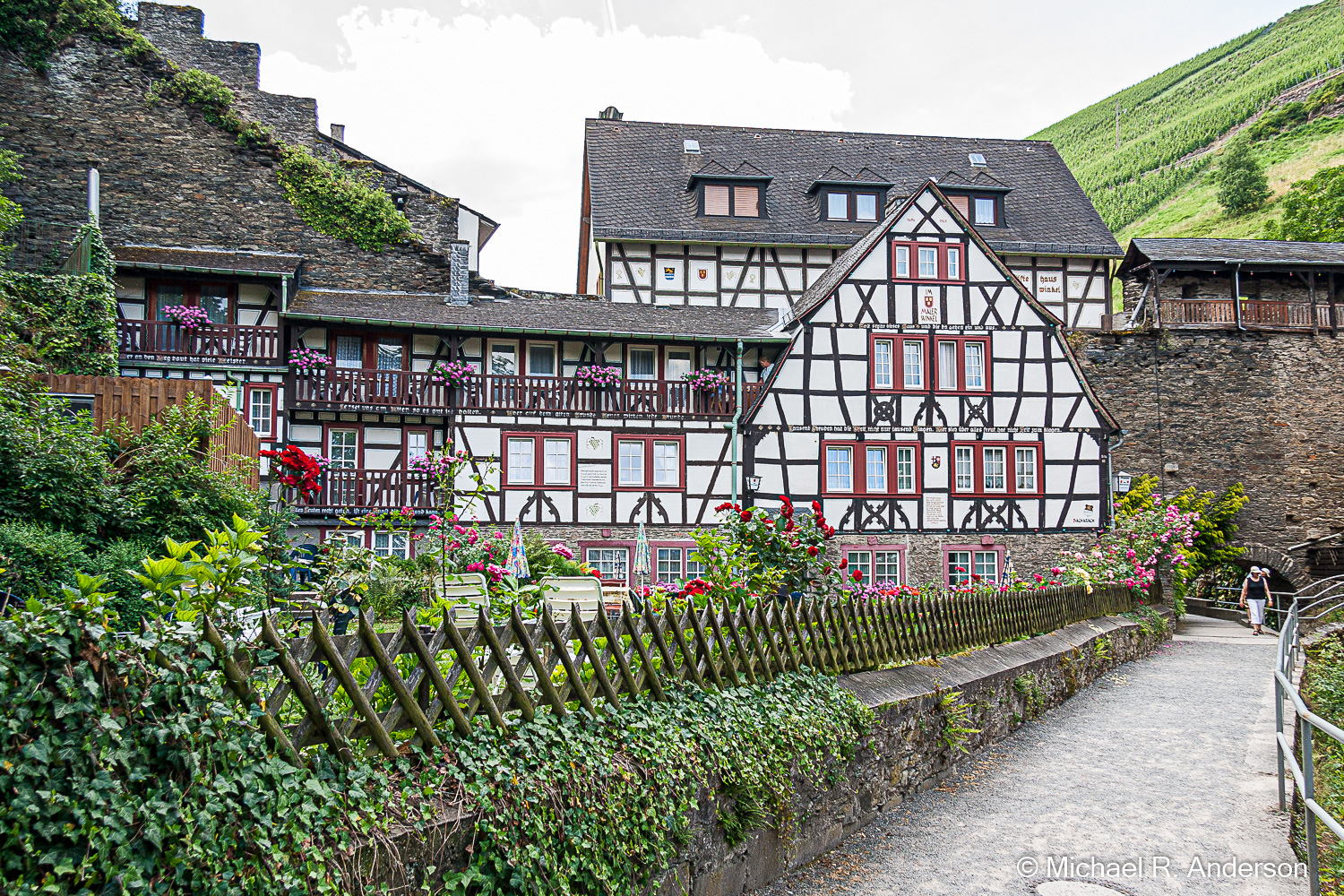
It was interesting to see that the Pension im Malerwinkel actually straddles the old town wall. From our room we could look out and see the other side of the wall, a walkway through the wall, and one of the towers and gates that leads into the town.
Walls, of course, were the high-tech defensive weapons of the Middle Ages. Like many cities from that time, Bacharach once had a wall that surrounded and protected it from invaders. A large part of that wall still remains. The gates are all now permanently open, of course, and stairways are provided so that you can climb up and walk along the top. Businesses line the inside of the wall, so you can access shops, restaurants, and hotels from the top of it. In a way, the walls are now inviting invaders.
In this part of Germany, from Koblenz south to Rüdesheim, the Rhine River has carved a steep winding gorge through the surrounding landscape. The scenery is quite beautiful here with small villages of half-timbered houses along the shore backed by steep terraced vineyards reaching up the hillsides. This area is notable enough that a 40-mile stretch was designated as a World Heritage Site in 2002 by UNESCO. Bacharach sits in the middle of it all.
As you can imagine, it’s quite easy to walk around a town this small. I was fascinated by all of the old buildings lining the cobble-stone streets. Yes, there were half-timbered buildings, but I found my attention drawn more to the interesting windows, doors and well-maintained flower boxes.
Vineyards abound in the Rhine Valley. Given the steep, rocky hillsides that ensconce this part of the river, I would never have guessed that to be true. Some of the vineyards in this region sit on slopes that are inclined at angles of up to 65%. Riesling is by far the most popular grape; current data list it as 88% of the production.
There was a vineyard across the road from our hotel so we decided to get a closer look. A small path allowed us to walk up the hill — 45%? — without having to walk in the rows of grapes. From the hill we could clearly see Burg Stahleck, a castle from the 12th century which is now a youth hostel. Looking down we had a broader view of the town with the steeple of St. Peters Church rising above the jumble of roof tops.
Back in town we again wandered the streets, this time looking for food. Even if you didn’t know any German, you could easily tell what some of the shops sold. We finally found a quiet, cozy place to dine. Although I don’t remember the main course, I definitely recall the wonderful dessert.
